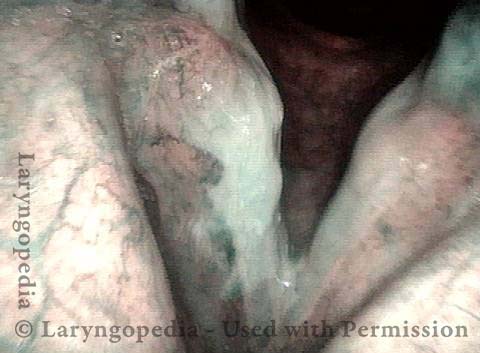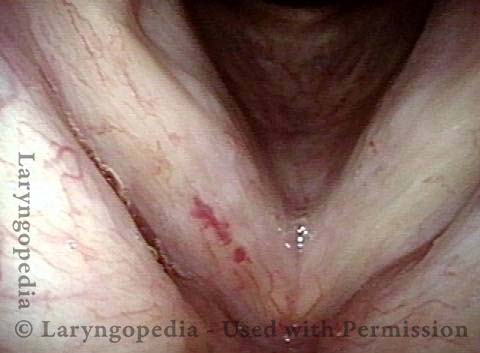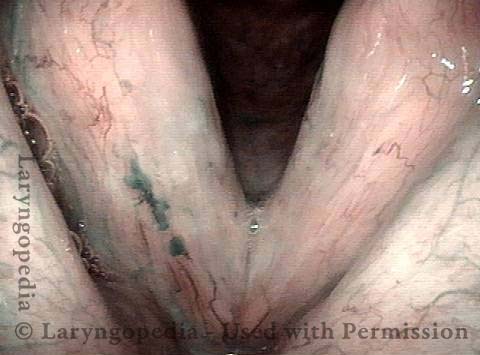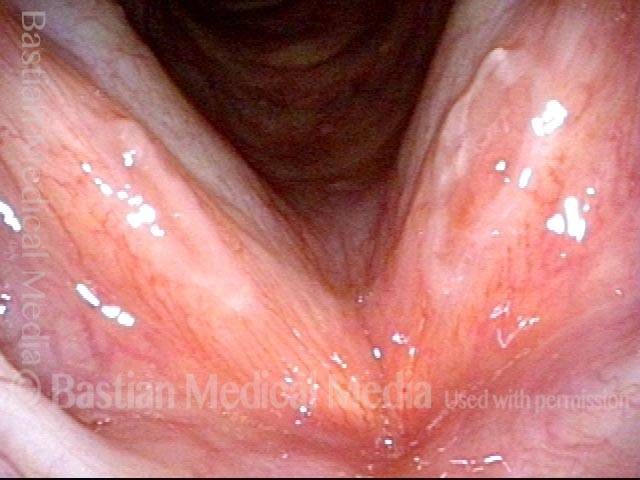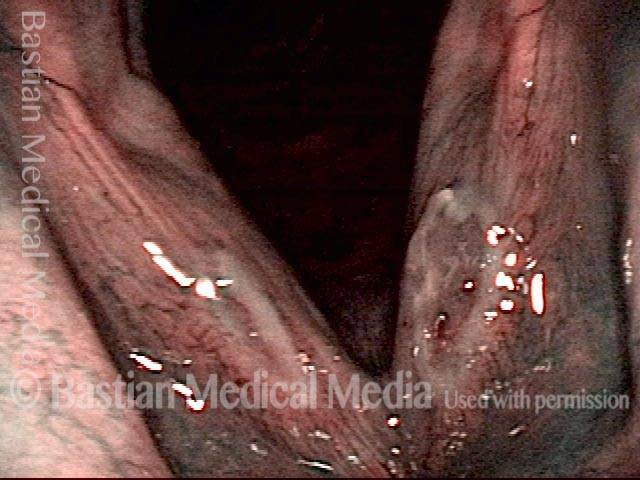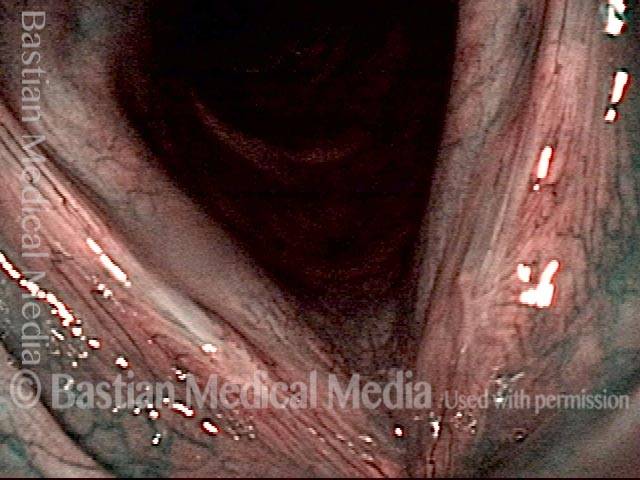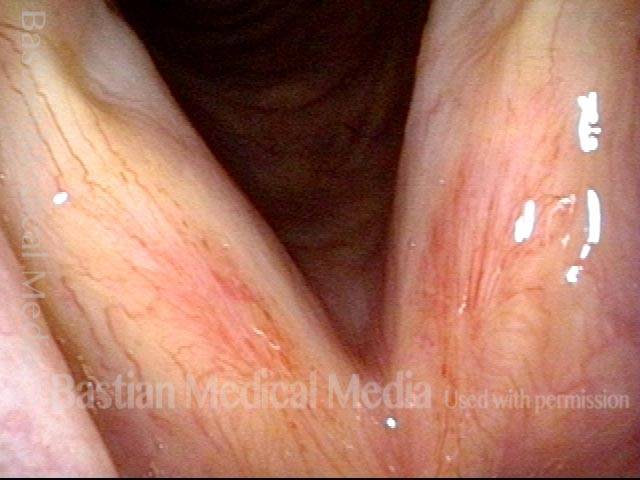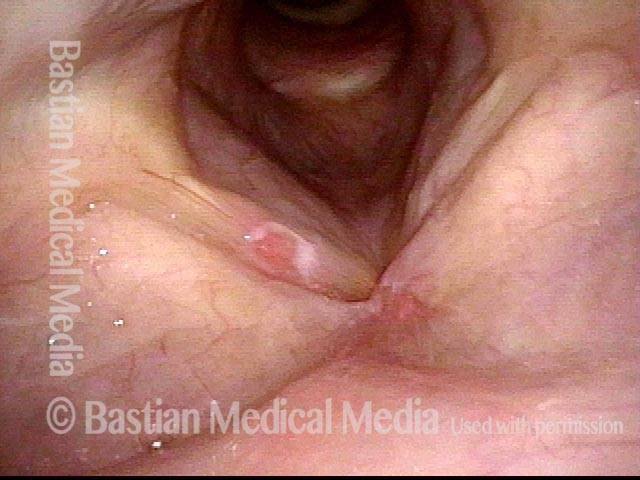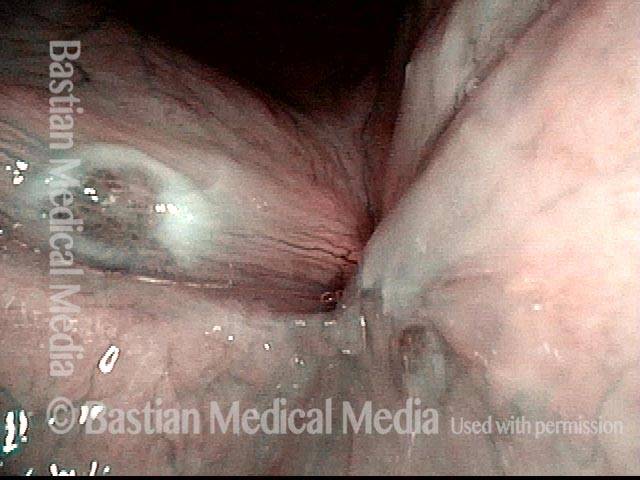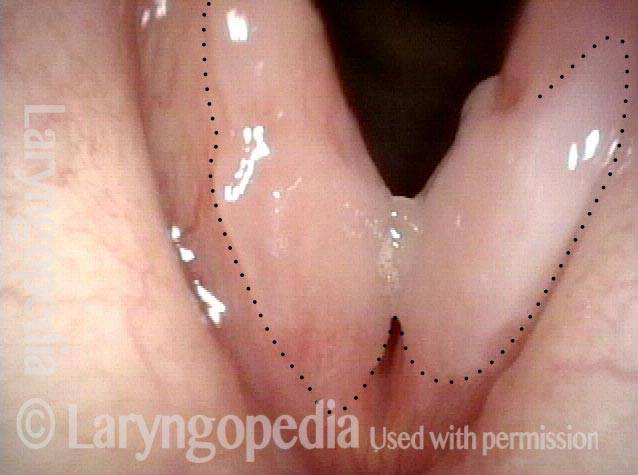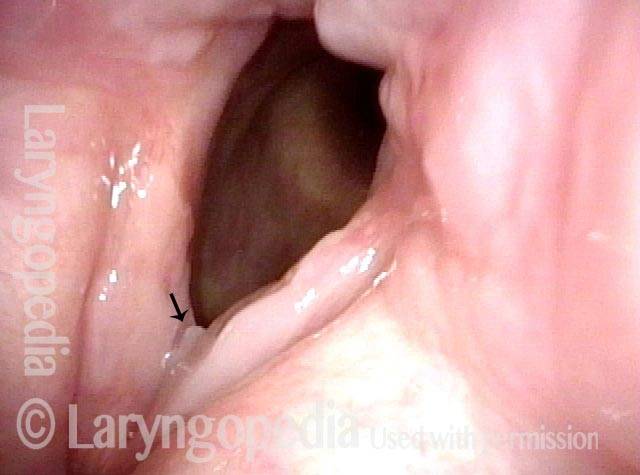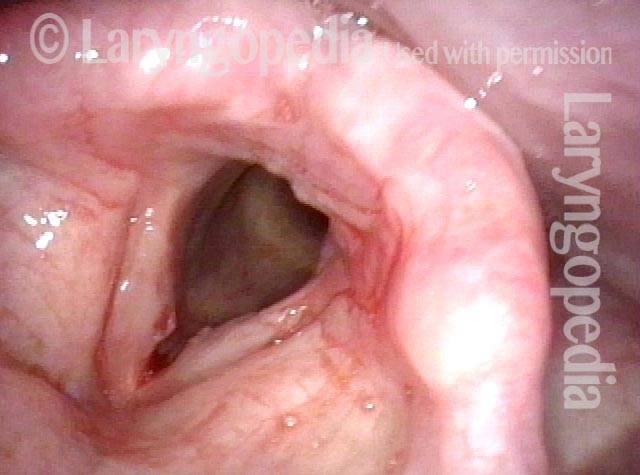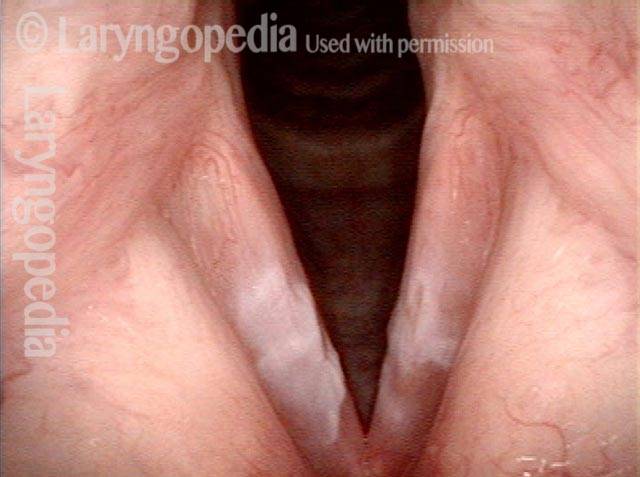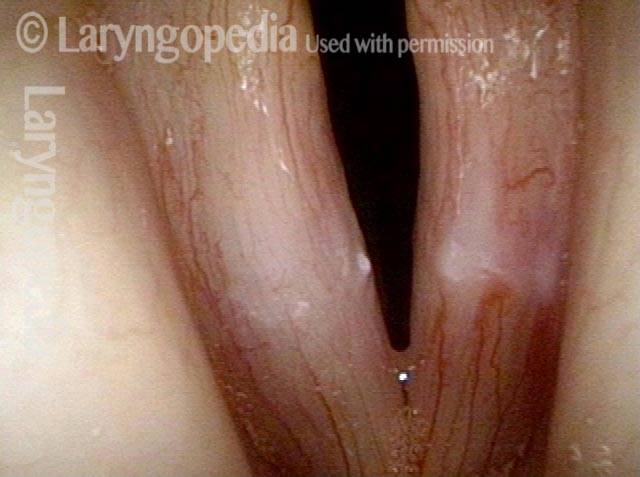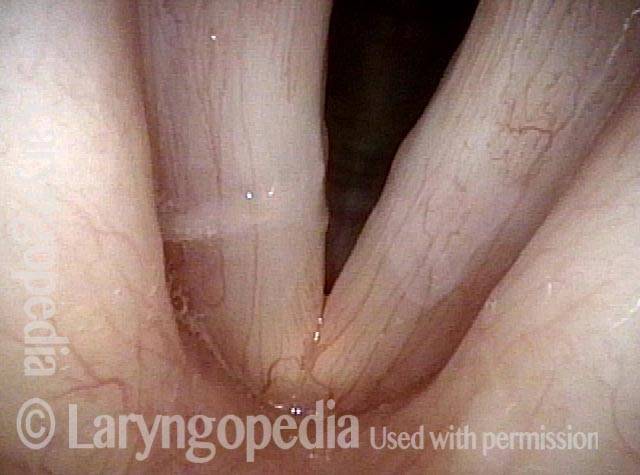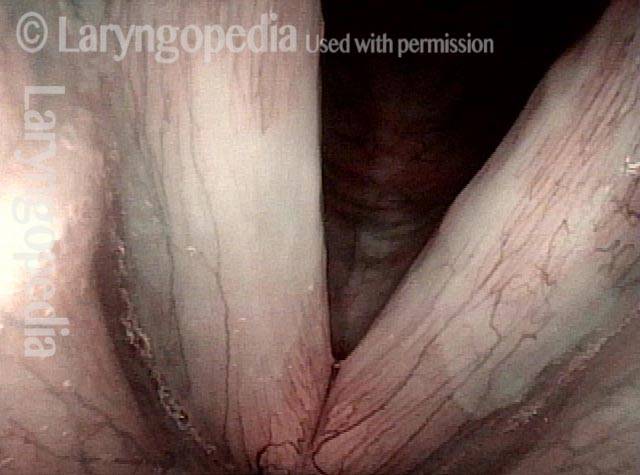Ulcerative laryngitis is a peculiar and uncommon type of laryngitis that causes the mucosa to ulcerate. There is usually a white area of apparent mucosal necrosis with a surrounding rim of intense erythema. Recovery of voice is slow, often taking several weeks, in contrast to more typical forms of laryngitis. The causative agent is not known to us at our practice, though we have some theories.
Ulcerative Laryngitis in a Professional Singer
This professional singer had struggled with severe hoarseness for several weeks before being examined. Identification of superficial ulcerative laryngitis (rather than garden-variety viral or bacterial types) helped counsel him that it would be several more weeks before his voice would be restored. This kind of laryngitis does not seem to respond to antibiotics, antifungals, or steroids, and must just take its course to healing. Unfortunately, a common time required for healing is 6 and even 8 weeks. Surprisingly, with healing, the voice typically returns fully to its baseline capabilities.

